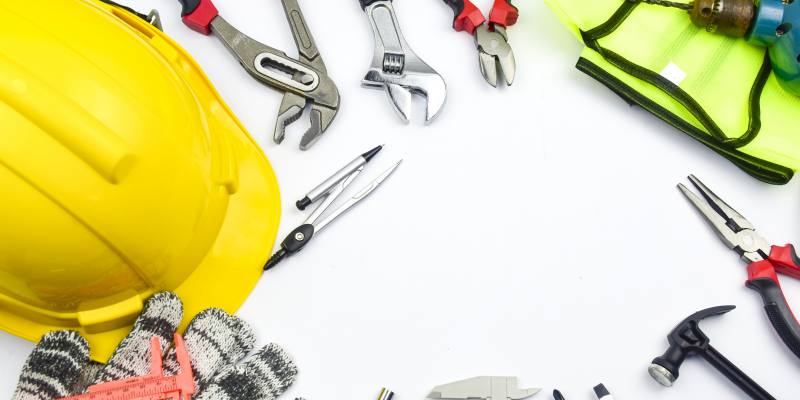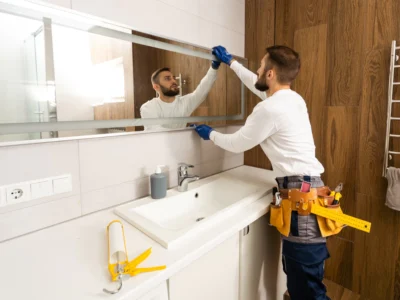With the skyrocketing costs of construction labor and materials, it’s not surprising that most handy workers choose to perform home improvement projects themselves.
And, as anyone in the construction industry knows, accidents could happen even with stringent safety measures in place. In fact, one in five workplace deaths in the United States happen in the sector, per Occupational Safety and Health Administration (OSHA).
Home projects should be kept doubly safe, especially when done by amateurs. Taking the following safety precautions should minimize the risk of accidents even before you take out your power tools.
Most Common Causes of Home Improvement Accidents
Unlike the home rehab projects you see on television; renovation activities are less glamorous and more perilous for the following reasons:
- Falling Off a Ladder
Whether changing a light bulb or cleaning the roof, you’ll definitely need to use a ladder. The same thing goes for almost every home project, such as kitchen remodeling, bedroom repainting, building an underground room or roof re-installation.
Unfortunately, the fact that it’s highly functional makes the lowly ladder the leading culprit for the majority of accidents. Ladder-related injuries affect 500,000 individuals annually, according to the American Academy of Orthopedic Surgeons.
- Getting Injured from Power Tools
Seasoned and novice do-it-yourselfers are often seen with their power tools, and they look really cool. But make no mistake, as these home renovation essentials are capable of sending 400,000 people to the emergency room, according to OSHA.
- Electric Shocks
Of the 280,000 Americans confined for electric shocks yearly, 400 don’t make it alive, according to the Consumer Product Safety Commission.
While there’s nothing stopping you from wearing electricians t shirts, performing renovation jobs that require you to tackle electricity may be best left to professionals.
- Trips, Slips, and Falls
The National Safety Council estimates that over one million people experience these injuries every year. In line with this, falls account for 33% of all construction, according to the US Bureau of Labor Statistics (BLS).
15 Safety Tips For Your Home Improvement Projects

smart indian contractor hand use sawing machine wood work house renovation background home improvement ideas concept
- Choose function over fashion and wear slim fit plumbers t shirts. Loose sleeves and accessories can get stuck in your power tools or in between the gaps in the ladder. Make sure to use puncture-resistant nitrile gloves suitable for most home improvement projects to get proper hand protection. Wear protective glasses, safety boots, and gloves, too.
- Ask someone to help you out. An extra set of eyes and ears can spot any safety risk, apart from making sure that you’d never miss a spot.
- Make sure your worksite is clear of any obstructions. Remove cords, bolts, screws, and any sharp debris away from your area. Use non-slip shoes and mats, and wipe dry any spills, especially for oily substances.
- Opt for a sturdy ladder and follow the 4-to-1 rule in proper ladder placement. For the uninitiated, the rule states that for every four feet height, the bottom of the ladder should be placed one foot away from the wall. Avoid using a ladder that’s too short for the job.
- Always follow instructions when working with power tools. Look for quality marks when buying these items for your own safety.
- Make sure that it’s turned off before plugging in, and turn it off when not in use. Never leave a power tool lying on the floor.
- Check power tools before using, including the wires and plug. If it shows any sign of damage, don’t use it.
- Keep your tools away from children and any dangerous substances. Handle your DIY gadgets with care and never attempt to replace blades, drill bits, and other accessories while the device is running.
- Turn off the main power switch before dealing with any project involving electricity.
- Don’t attempt to tackle a job you know nothing about, whether related to electrical power or otherwise.
- Make sure your area is well lit and well-ventilated, especially when handling any type of chemicals, such as paint, varnish, thinners, and the like.
- Wear a mask if dealing with noxious fumes. Paint is not the only potential source of toxic fumes. PVC plastic, mold, and the invisible radon gas from underground can damage your respiratory system with regular exposure.
- Use chemicals as directed. Don’t attempt to mix chemicals unless instructions say so.
- Store everything in a safe place. Power tools, sharp objects, and other gadgets should be kept out of children’s reach.
- Have your first aid kit ready. Wear a belt bag with basic first aid materials such as antiseptic, bandage, gauze, and band-aids. Make sure these items are easy to use.
Final Thoughts
Besides getting the job right, safety should be included in every DIYer’s home renovation goals. Before rolling up your sleeves, make sure that your work area is secure. Have someone work with you and check the points listed above to minimize potential safety risks.
Most importantly, know your limitations and don’t take on any home renovation job if you’re uncomfortable.










Comments